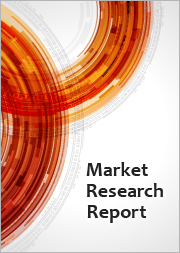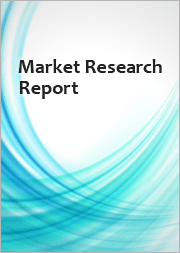
|
시장보고서
상품코드
1772420
미국의 바이오 기반 섬유 시장 - 규모, 점유율, 동향 분석 보고서 : 원료별, 용도별, 부문별 예측(2025-2030년)U.S. Bio-based Textiles Market Size, Share & Trends Analysis Report By Source Material (Plant-Based, Animal-Based, Microbial/Bioengineered), By Application (Apparel, Home Textiles, Industrial Textiles), And Segment Forecasts, 2025 - 2030 |
||||||
미국의 바이오 기반 섬유 시장 규모 및 동향
미국의 바이오 기반 섬유 시장 규모는 2024년에 60억 8,000만 달러였고, 2025-2030년까지 CAGR 8.5%를 보일 것으로 예측됩니다. 바이오 섬유 산업은 지속 가능한 제품에 대한 수요 증가, 환경 의식 증가 및 지원 규제 프레임워크로 성장할 것으로 예측됩니다. 바이오 섬유 제품은 생분해성이 있으며 수명주기의 끝에 자연적으로 분해되도록 설계되었습니다. 식물, 조류, 미생물 등 재생 가능한 자원으로 제조되므로 매립지의 축적을 최소화하고 마이크로 플라스틱 오염을 없앨 수 있습니다. 이 시장 전환은 친환경 제조 및 소비 관행으로의 광범위한 전환을 반영합니다.
텍스타일 제품은 의류와 가구에서 의료기기 및 보호 장비에 이르기까지 일상 생활에 필수적인 제품입니다. 섬유 제품의 사용량이 계속 증가함에 따라 환경에 미치는 영향도 커지고 있습니다. 오늘날 대부분의 섬유는 폴리에스테르와 같은 화석 유래 물질로 만들어졌으며 온실가스 배출, 대량의 물 사용, 천연 자원 고갈의 원인이 되었습니다. 이러한 문제를 해결하기 위해 Mylo (U.S.), Bolt Threads, Allbirds 등 미국의 많은 기업들이 목재, 섬유 작물, 조류, 균류, 농업 폐기물 등 재생 가능한 자원으로 만들어진 바이오 섬유를 개발하고 있습니다. 이러한 재료는 종종 생분해성이 있고 친환경적입니다. 또한 혁신의 새로운 기회를 제공하고 지속 가능한 섬유 시장의 기대되는 성장을 추진하고 있습니다.
게다가 '미국제' 텍스타일 제품에 대한 주목이 높아짐에 따라 하이테크 주도의 의류와 원단의 수출입이 증가하고 있습니다. 바이오 기반 섬유에는 주로 천연 섬유, 반합성 섬유, 합성 섬유의 3가지 유형이 있습니다. 각각의 유형은 다른 생산 기술에 의해 형성된 명확한 밸류 체인에 따르고 있어, 그 결과, 독특한 특성과 용도를 가지는 텍스타일이 태어납니다.
목차
제1장 조사 방법과 범위
제2장 주요 요약
제3장 미국의 바이오 기반 섬유 시장의 변수, 동향, 범위
- 시장 계통의 전망
- 모 시장 전망
- 관련 시장 전망
- 산업 밸류체인 분석
- 규제 프레임워크
- 시장 역학
- 시장 성장 촉진요인 분석
- 시장 성장 억제요인 분석
- 산업의 과제
- 산업의 기회
- 산업 분석도구
- Porter's Five Forces 분석
- 거시적 환경 분석
제4장 미국의 바이오 기반 섬유 시장 : 원료별, 추정 및 동향 분석
- 부문 대시보드
- 미국의 바이오 기반 섬유 시장 : 원료 변동 분석과 시장 점유율, 2024년 및 2030년
- 식물 유래
- 동물 유래
- 미생물 및 바이오엔지니어링
- 기타
제5장 미국의 바이오 기반 섬유 시장 : 용도별, 추정 및 동향 분석
- 부문 대시보드
- 미국의 바이오 기반 섬유 시장 : 용도별 변동 분석과 시장 점유율, 2024년 및 2030년
- 옷
- 가정용 섬유
- 산업용 섬유
- 기타
- 기타 수익 추정과 예측, 2018-2030년
제6장 미국의 바이오 기반 섬유 시장 - 경쟁 구도
- 주요 시장 진출기업에 의한 최근의 동향과 영향 분석
- 기업 분류
- 기업 히트맵/포지션 분석, 2024년
- 전략 매핑
- 확대
- 합병과 인수
- 파트너십 및 협업
- 신제품 발매
- 연구개발
- 기업 프로파일
- DuPont
- Bolt Threads
- Natural Fiber Welding, Inc.
- Origin Materials
- Sustainable Fiber Technologies
- BastCore Inc.
U.S. Bio-based Textiles Market Size & Trends:
The U.S. bio-based textiles market size was valued at USD 6.08 billion in 2024 and is anticipated to grow at a CAGR of 8.5% from 2025 to 2030. The bio-based textiles industry is expected to grow with increasing demand for sustainable products, heightened environmental awareness, and supportive regulatory frameworks. Bio-based textiles are biodegradable and engineered to decompose naturally at the end of their lifecycle. These are manufactured from renewable resources, such as plants, algae, and microorganisms, which help minimize landfill accumulation and eliminate microplastic pollution. This market shift reflects a broader transition toward environmentally responsible manufacturing and consumption practices.
Textiles are vital to everyday life, from clothing and furniture to medical and protective equipment. As textile usage continues to grow, so does its impact on the environment. Most textile fibers today are made from fossil-based materials like polyester, which contribute to greenhouse gas emissions, high water usage, and the depletion of natural resources. To address these issues, many companies in the U.S., including Mylo (U.S.), Bolt Threads, and Allbirds, are developing bio-based textiles made from renewable sources such as wood, fiber crops, algae, fungi, and agricultural waste. These materials are often biodegradable and more environmentally friendly. They also offer new opportunities for innovation and are helping drive the expected growth in the sustainable textile market.
Moreover, the growing focus on 'Made in U.S.A.' textile products has increased the import and export of high-tech driven apparel and fabrics. In 2023, U.S. textiles accounted for over 83% of the output of the textile and apparel industry, which is also contributing to the rise of bio-based textiles in the U.S. There are three main types of bio-based fibers, which include natural, semi-synthetic, and synthetic. Each type follows a distinct value chain shaped by different production technologies, which results in textiles with unique properties and applications. By replacing conventional synthetic textiles with bio-based textiles, such as bamboo or hemp, and adopting sustainable manufacturing processes, the industry can expect significant reduction in emissions and waste.
U.S. Bio-based Textiles Market Report Segmentation
This report forecasts revenue at the country level and analyzes the latest industry trends in each sub-segment from 2018 to 2030. For this study, Grand View Research has segmented the U.S. bio-based textiles market report based on source material and application:
- Source Material Outlook (Revenue, USD Million, 2018 - 2030)
- Plant-Based
- Animal-Based
- Microbial/Bioengineered
- Others
- Application Outlook (Revenue, USD Million, 2018 - 2030)
- Apparel
- Home Textiles
- Industrial Textiles
- Others
Table of Contents
Chapter 1. Methodology and Scope
- 1.1. Market Segmentation & Scope
- 1.2. Market Definition
- 1.3. Information Procurement
- 1.3.1. Purchased Database
- 1.3.2. GVR's Internal Database
- 1.3.3. Secondary Sources & Third-Party Perspectives
- 1.3.4. Primary Research
- 1.4. Information Analysis
- 1.4.1. Data Analysis Models
- 1.5. Market Formulation & Data Visualization
- 1.6. Data Validation & Publishing
Chapter 2. Executive Summary
- 2.1. Market Snapshot
- 2.2. Segment Snapshot
- 2.3. Competitive Landscape Snapshot
Chapter 3. U.S. Bio-based Textiles Market Variables, Trends & Scope
- 3.1. Market Lineage Outlook
- 3.1.1. Parent Market Outlook
- 3.1.2. Related Market Outlook
- 3.2. Industry Value Chain Analysis
- 3.3. Regulatory Framework
- 3.4. Market Dynamics
- 3.4.1. Market Driver Analysis
- 3.4.2. Market Restraint Analysis
- 3.4.3. Industry Challenges
- 3.4.4. Industry Opportunities
- 3.5. Industry Analysis Tools
- 3.5.1. Porter's Five Forces Analysis
- 3.5.2. Macro-environmental Analysis
Chapter 4. U.S. Bio-based Textiles Market: Source Material Estimates & Trend Analysis
- 4.1. Segment Dashboard
- 4.2. U.S. Bio-based Textiles Market: Source Material Movement Analysis & Market Share, 2024 & 2030
- 4.3. Plant-Based
- 4.3.1. Plant-Based Market Revenue Estimates and Forecasts, 2018 - 2030 (USD Million)
- 4.4. Animal-Based
- 4.4.1. Animal-Based Market Revenue Estimates and Forecasts, 2018 - 2030 (USD Million)
- 4.5. Microbial/Bioengineered
- 4.5.1. Microbial/Bioengineered Market Revenue Estimates and Forecasts, 2018 - 2030 (USD Million)
- 4.6. Others
- 4.6.1. Others Market Revenue Estimates and Forecasts, 2018 - 2030 (USD Million)
Chapter 5. U.S. Bio-based Textiles Market: Application Estimates & Trend Analysis
- 5.1. Segment Dashboard
- 5.2. U.S. Bio-based Textiles Market: Application Movement Analysis & Market Share, 2024 & 2030
- 5.3. Apparel
- 5.3.1. Apparel Market Revenue Estimates and Forecasts, 2018 - 2030 (USD Million)
- 5.4. Home Textiles
- 5.4.1. Home Textiles Market Revenue Estimates and Forecasts, 2018 - 2030 (USD Million)
- 5.5. Industrial Textiles
- 5.5.1. Industrial Textiles Market Revenue Estimates and Forecasts, 2018 - 2030 (USD Million)
- 5.6. Others
- 5.6.1. Others Revenue Estimates and Forecasts, 2018 - 2030 (USD Million)
Chapter 6. U.S. Bio-based Textiles Market - Competitive Landscape
- 6.1. Recent Developments & Impact Analysis, By Key Market Participants
- 6.2. Company Categorization
- 6.3. Company Heat Map/ Position Analysis, 2024
- 6.4. Strategy Mapping
- 6.4.1. Expansion
- 6.4.2. Mergers & Acquisition
- 6.4.3. Partnerships & Collaborations
- 6.4.4. New Product Launches
- 6.4.5. Research and Development
- 6.5. Company Profiles
- 6.5.1. DuPont
- 6.5.1.1. Participant's Overview
- 6.5.1.2. Financial Performance
- 6.5.1.3. Product Benchmarking
- 6.5.1.4. Recent Developments
- 6.5.2. Bolt Threads
- 6.5.2.1. Participant's Overview
- 6.5.2.2. Financial Performance
- 6.5.2.3. Product Benchmarking
- 6.5.2.4. Recent Developments
- 6.5.3. Natural Fiber Welding, Inc.
- 6.5.3.1. Participant's Overview
- 6.5.3.2. Financial Performance
- 6.5.3.3. Product Benchmarking
- 6.5.3.4. Recent Developments
- 6.5.4. Origin Materials
- 6.5.4.1. Participant's Overview
- 6.5.4.2. Financial Performance
- 6.5.4.3. Product Benchmarking
- 6.5.4.4. Recent Developments
- 6.5.5. Sustainable Fiber Technologies
- 6.5.5.1. Participant's Overview
- 6.5.5.2. Financial Performance
- 6.5.5.3. Product Benchmarking
- 6.5.5.4. Recent Developments
- 6.5.6. BastCore Inc.
- 6.5.6.1. Participant's Overview
- 6.5.6.2. Financial Performance
- 6.5.6.3. Product Benchmarking
- 6.5.6.4. Recent Developments
- 6.5.1. DuPont
(주말 및 공휴일 제외)


















